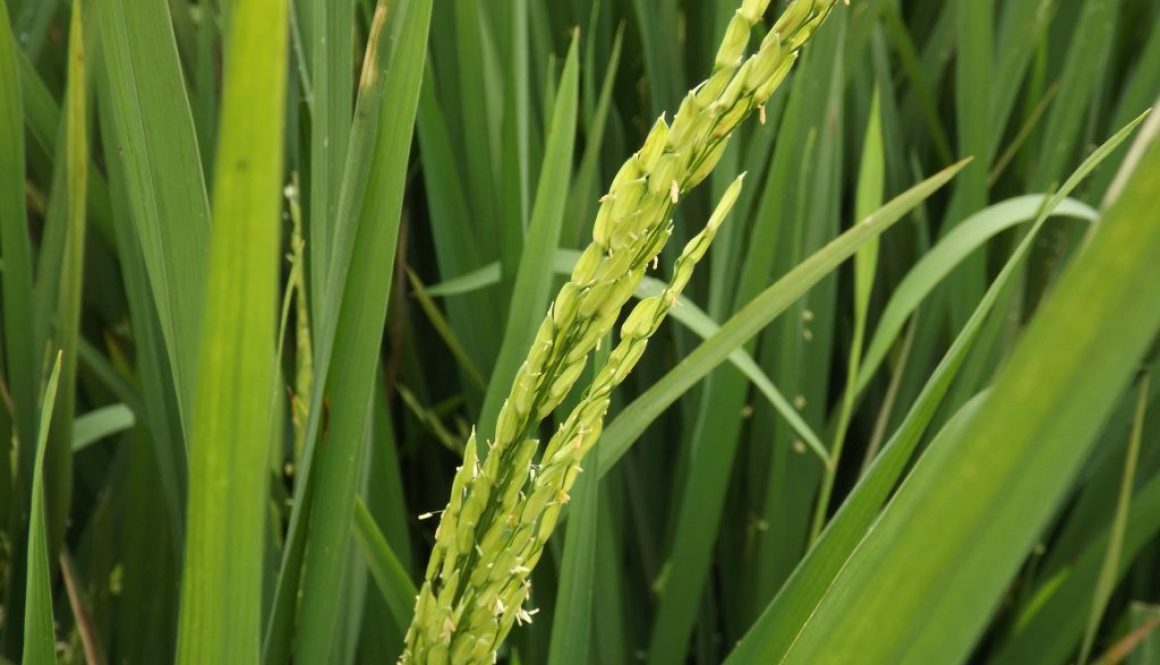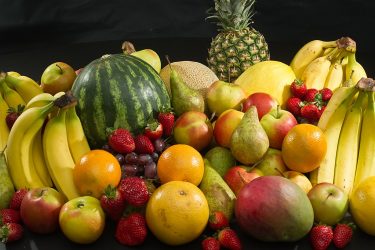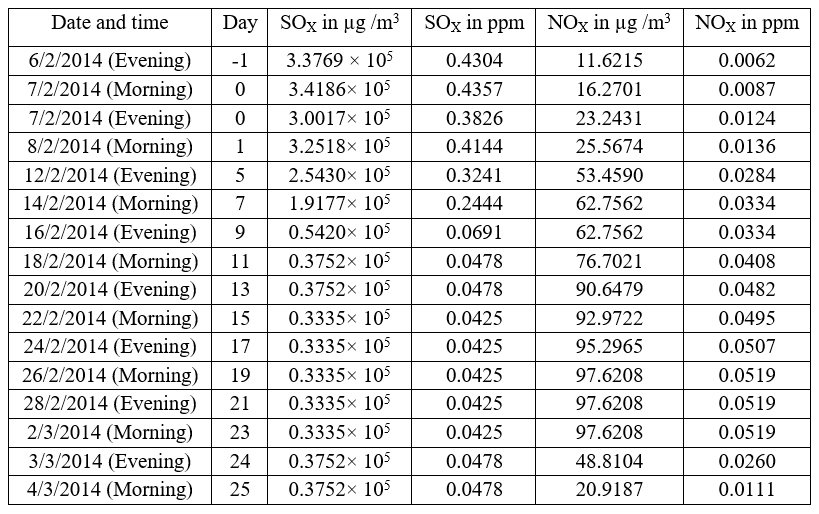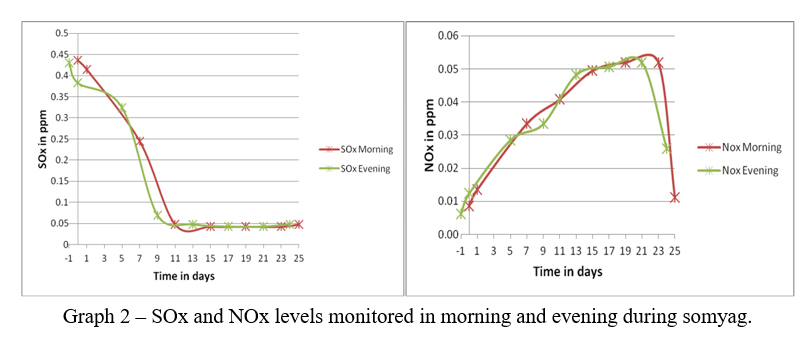
Category: Agnihotra




Agnihotra Timing
Agnihotra Timing
A
NOTE: All times based on Google search result. If your place not mentioned. Please email us at aboorvasscare@gmail.com

Strategies of organic farming in fruit crops
by
Sandhya Bhat, KK Misra and Vikas Kumar Sharma

Abstract
Organic agriculture has grown out of the conscious efforts by inspired people to create the best possible relationship between the earth and men. Since its beginning, the sphere surrounding organic agriculture has become considerably more complex. A major challenge today is certainly its entry into the policymaking arena, its entry into the anonymous global market and the transformation of organic products into commodities. During the last two decades, there has also been a significant sensitization of the global community towards environmental preservation and assuring of food quality. Ardent promoters of organic farming consider that it can meet both these demands and become the mean for the complete development of rural areas. After almost a century of developing organic agriculture is now being embraced by the mainstream and shows great promise
commercially, socially and environmentally. While there is a continuum of thought from earlier days to the present, the modern organic movement is radically different from its original form. It now has environmental sustainability at its core in addition to the founder’s concerns for healthy soil, food, and people. In recent years, the market for organic farming has significantly increased in response to concerns over food quality and environmental matters. Organic food is quite attractive for consumers and is often associated with quality, healthy and natural products in opposition to the more processed and artificial conventional food.
Keywords: biofertilizer, Fruits, Mulching, Organic farming, Panchgavya
Introduction
Organic farming is a holistic production management system which promotes and enhances agro-ecosystem health including biodiversity, biological cycles, and soil biological activity and this is accomplished by using on-farm agronomic, biological and mechanical methods in exclusion of all synthetic off-farm inputs (Codex, 2007 [5]; FAO, 2012 [8]). It emphasizes the use of management practices in preference to the use of off-farm inputs, taking into account that regional conditions require locally adapted systems. Organic farming refers to the way of agricultural products (food and fiber) are grown and processed. It excludes the use of chemical fertilizers and pesticides, plant growth regulators, and livestock feed additives. Genetically modified organisms (GMOs) are not allowed in organic farming. As far as possible, organic farmers depend on crop rotation, green manures, compost, mulching, biological pest control, and mechanical cultivation to maintain productive soil and control pests (Diver, 2000 [7]). In the case of livestock, antibiotics are forbidden and instead preventative measures for keeping animals healthy and productive are used.
Management Principles
Organic farming management is an integrated approach, where all aspects of farming systems are interlinked with each other and work for each other. A healthy biologically active soil is the source of crop nutrition, on-farm biodiversity, controls pests, crop rotation and multiple cropping maintains the system’s health and on-farm resource management with integration of cattle to ensure productivity and sustainability. Organic management stresses on optimization of resource use and productivity, rather than maximization of productivity and over-exploitation of resources on the cost of resources meant for future generations. Living soil is the basis of organic farming. A live, healthy soil with proper cropping patterns, crop residue management, and effective crop rotation can sustain optimum productivity over the years, without any loss in fertility. Organic farming envisages a comprehensive management approach to improve soil health, the ecosystem of the region and the quality of produce. It includes all agricultural systems that promote environmentally sound production of food and fibers. These systems take local soil fertility as a key to successful production by respecting the natural capacity of plants, animals and the landscape; they aim to optimize quality in all aspects of agriculture and the environment. A living soil can be maintained by continuous incorporation of crop and weed biomass, use of animal dung, urine-based manures (FYM, NADEP, vermicompost), biofertilizers and bio-enhancers, special liquid formulations (like vermiwash, compost tea, etc.) during a crop’s duration.
Strategies 1. Soil Management
A. Crop rotation: Crop rotation involves planting different crop species at different times and locations on the same field. Rotating crops improve the tilth or structure of the soil. This practice reduces soil erosion and pest build up, promotes soil fertility and spreads out financial risk in case a crop fails. Crop rotations result in an increase in soil microbial activity which may increase nutrient availability and including phosphorus. Yields are usually 10 to 15% higher with the practice of crop rotation than monoculture (Frick and Johnson, 2006)[9]

B. Cover Cropping: A cover crop is any crop grown to provide a cover for the soil. They can be annual, biennial or perennial herbaceous plants grown in a pure or mixed stand during all or part of the year. This practice helps loosen compacted soil through root growth, improves water filtration and prevents soil erosion by wind and water. Cover crops also help suppress weeds by keeping the sun from reaching weed seeds and reduce insect pests and diseases (VanTine and Verlinder, 2003) [19].
D. Green leaf manuring: Application of green leaves and twigs of trees, shrubs, and herbs collected from elsewhere. The important plant species are – Neem, Mahua, Wild indigo, Glyricidia, Karanji (Pongamia glabra) calotropis, avise (Sesbania grandiflora), subabul and other shrubs. It improves soil structure, increases water holding capacity and decreases soil loss by erosion, reduces weed proliferation and weed growth, helps in the reclamation of alkaline soils and root-knot nematodes can be controlled.
E. Animal manures: Manure can be applied to the field in either a raw or composted form. Raw manure contributes nutrients to the soil, adds organic matter and encourages biological processes in the soil. Composting of manure is best, since the heat created during composting may kill most of the contaminants, thus the risk of pathogens related to food safety is minimized or eliminated. Farmers should have the soil tested before adding either raw or composted manures (VanTine and Verlinder, 2003) [19]. Composting reduces biomass volume thus facilitating ease of transportation. For organic certification, manure from factory animal production units will not be permitted. USDA standards require a 90120 day period from the time manure is applied to the time of harvest (Biernbaum, 2003) [4].
F. Mulching: Covering the ground with a layer of loose material such as compost, manure, straw, dry grass, leaves or crop residues. It reduces moisture loss and conserves water, improves soil structure, reduces soil temperature, reduces or stops weed growth, reduces soil compaction, provides essential nutrients needed for good plant growth, protects plants from the cold when applied in the fall, provides a clean and pleasant surface for caring for plants and harvesting fruits. Mulching can be done at almost any time of the year (Best in June – July, for winter protection – November). Straw, hay, wood chips, ground bark, sawdust, leaves, grass clippings, and pine needles are common mulching materials. These should be applied to a depth of 5 to 15 cm and cover the ground around a plant out to the drip line. Rehman et al. (2015) [15] studied the effect of different mulching materials on fruit size and yield of Strawberry and found that straw dust gave maximum fruit size and yield. The response of soil covers on guava cv. Sardar was studied by Das et al., (2010) [6] and the results showed that among organic and inorganic mulches used, paddy straw was found to be effective to improve the fruit quality of guava.

Agnihotra Ash and Water Soluble Phosphates
by
Agnihotra Ash and Water Soluble Phosphates
Dr. Tung Ming Lai, Denver, Colorado, USA

I did some lab testing on Agnihotra ash. The results are interesting. 0.1g of ash was shaken with 25 ml of water for forty eight hours and then the water-soluble phosphate content was measured. The same amount of ash was thaken with two different soils (5g) from Colorado (also 25 ml of water) and phosphate content was measured after forty-eight hours of being shaken.
The results are as follows. (The values are the average values of duplicates.)

The non-Agnihotra ash was produced with the same ingredients in the same copper vessel as Agnihotra ash. The only difference was the non-Agnihotra ash was not produced at sunrise or sunset, and no mantras were chanted.
(All growing plants need phosphorus; however, regardless of how much phosphorus is added to the soil, only the water soluble portion can be utilized by the plant. On an average, only about five percent of the phosphorus in
conventional chemical fertilizers is water soluble.–Ed.)
Source: www.homatherapy.org/content/agnihotra-ash-and-water-soluble-phosphates
Download PDF

Study the effects of Yadnya fumes on SOx and NOx levels in the surrounding environment
by
Abhang Pranay, D. Pathade Girish
Teaching Associate, Institute of Bioinformatics and Biotechnology, Savitribai Phule Pune University, Pune 411007, Maharashtra, India1
Principal, H. V. Desai College, Pune 411002, Maharashtra, India 2
Email – pranayabhang@yahoo.co.in, Email – girishpathade@yahoo.co.in

ABSTRACT
Yadnya is a ritual of offerings accompanied by chanting of Vedic mantras derived from the practice in Vedic times. Due to Yadnya fumes and overall process, it affects environmental elements, hence its effects on oxides of sulphur and nitrogen were studied as they are the major air pollutants. Effects of Agnihotra Yadnya, Shrisukta Yadnya, and somyag Yadnya were studied by collecting surrounding air using a handy sampler. SOx and NOx levels before Yadnya, during Yadnya and after Yadnya were calculated and compared from collected air. As per our results, SOx levels decreases up to 10 times (almost reduces to 90%) that of initial levels due to all three Yadnyas. NOx levels increase 10 -20 % that of initial levels, but at the end of all Yadnyas NOx level reduces that to initial. Hence by performing Yadnya SOx and NOx pollution can be controlled.
INTRODUCTION
Agnihotra Yadnya, Shrisukta Yadnya, Somyag Yadnya are rituals of offerings of ghee, dried twigs of various plants that are religiously mentioned in the Vedic literature and have medicinal potential, as well accompanied by chanting of Vedic mantras derived from the practice in Vedic times. These Yadnyas are performed by using the method mentioned in the Vedic literature.
In the air as a part of pollution, various pollutants are found especially Sox and NOx. There are claims that Yadnya fumes and procedures reduce air pollutions. Hence attempts were made to test scientifically the effect of Yadnya fumes and procedure on the levels of Sox and NOx.
METHOD
Air samples were collected by using respective absorbing reagents for SOx and NOx with the help of Handy sampler. (Spectralab, HDS -8)
A. Estimation of SOx
SOx was estimated by improved West and Gaeke method (1956), in short, SO2 from the surrounding airstream was absorbed in a sodium tetra-chloromercurate solution, it forms a stable dichloro sulpho mercurate (HgCl2SO3)2- complex, which then behaves effectively as fixed SO3-2 in solution. The amount of SO2 was then estimated by the color produced when p-rosailine-hydrochloride and formaldehyde were added in solution, which can be measured on a spectrophotometer at 560 nm. Calibration curve of standard sodium meta-bi sulphate was used for SOx estimation by using the following formula

B. Estimation of NOx
NOx was estimated by modified Jacobs – Hochheiser method (1972), in short, NO2 in air was collected by scrubbing a known volume of air through an alkaline solution of arsenite. The nitrite ions thus formed was reacted with sulfanilamide and N-(1-naphthyl) ethylenediamine (NEDA) in phosphoric acid to form the colored azo dye, which can be measured on spectrophotometer at 540 nm. The method was standardized statistically by using NaNO2 standards. Standardization is based upon the empirical observation that 0.74 mole of NaNO2 produces same color as 1 mole of NO2. SO2 can be removed using H2O2.

RESULTS
1. Agnihotra yadnya performed at Biotechnology department of Fergusson College, Pune

Table 1 – Effect of Agnihotra yadnya (Fergusson College) on SOx and NOx levels.
SO2 level in atmosphere reduces from 1.44 ppm to 0.56 ppm (about 43%) due to Agnihotra fumes (performed at sunset). NO2 level in the surrounding atmosphere was increased from 0.0086 ppm to 0.0094 ppm due to Agnihotra fumes (performed at sunset).
2. Agnihotra yadnya performed at Ramanbaug High-school, Pune

Table 2 – Effect of Agnihotra yadnya (Ramanbaug High-school) on SOx and NOx levels.
SOx in the surrounding environment reduces up to 10 times (4.4729 ppm to 0.4758 ppm) due to Agnihotra fumes. The effect of fumes remains after Agnihotra also, SOx shows 10 times reduction (Performed at sunrise). NOx in the surrounding environment increases up to 0.001 ppm due to Agnihotra fumes. But at the end of the Agnihotra NOx level become normal as before Agnihotra.
3. Shree-sukta Yadnya performed at Biotechnology department of Fergusson College, Pune

Table 3 – Effect of shreesukta Yadnya on SOx and NOx levels.
As per results, SO2 in the surrounding environment decreases 10 times (6.29 ppm to 0.65 ppm) due to the fumes of yadnya, NO2 level in environment increases (from 0.0034 ppm to
0.0046 ppm) but there is no any drastic change in NO2 level.
4. Somyag yadnya performed at Beed

Table 4 – Effect of somyag Yadnya (Beed) on SOx and NOx levels.
SO2 level in atmosphere reduces from 0.175 ppm to 0.0175 ppm (10 times) due to Mahasomyag fumes. There is no significant effect of Mahasomyag fumes on NO2 concentration. There is slight increase (0.0008 ppm) in NOx levels i.e. from 0.00094 ppm to 0.00173 ppm.
5. Somyag yadnya performed at Uruli (Devachi), Pune

Table 5 – Effect of somyag Yadnya (Pune) on SOx and NOx levels


SOx level decreases during and after yadnya up to 10 times that of initial (Reduces from 0.43 ppm to 0.048 ppm). SOx level remains decreased after the yadnya (at least up to 2 days) was finished. SOx pollution in the air can be reduce up to 90% by performing yadnya.
NOx level increases during yadnya up to 0.05 ppm, but also decreases to normal level (0.01 ppm) after yadnya (on day 24 and 25).
NOx level increases up to 20% as compare to initial (day -1 and 0) NOx levels. Standard NOx
(mostly NO2) level provided by ‘National Ambient Air Quality Standards’ (NAAQS) as well as ‘Maharashtra Pollution Control Board’ is 0.053 ppm (annual average per hour). Maximum value recorded was 0.052 ppm (during day 19 to 23) which is less as compare to standard levels.
REFERENCES
- W. West and G. C. Gaeke. “Fixation of Sulfur Dioxide as Disulfitomercurate (II) and Subsequent Colorimetric Estimation”. Anal. Chem., 1956, 28 (12), pp 1816 – 19.
J.H. Blacker and R.S. Brief. “Evaluation of the Jacobs-Hochheiser method for determining ambient nitrogen dioxide concentrations”. Chemosphere, volume 1, issue 1, January 1972, pp 43 – 6.
Pathade G. and Abhang Pranay. “Scientific study of Vedic knowledge – Agnihotra”, Bharatiya Bouddhik Sampada, quarterly Science Journal of Vijnana Bharati, Issue No. 43 – 44, Feb – June 2014, pp 18 – 27.